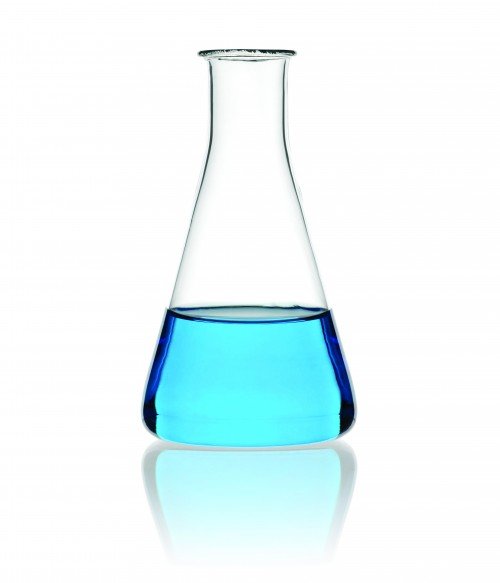The European Chemicals Agency is moving into gear with its preparations for the next and final registration deadline under REACH. While the European Commission begins to deliver on its promise to ease burdens, Susanne Baker provides a timely update.
 The final registration deadline under the Registration, Evaluation and Authorisation of Chemicals (REACH) Regulation takes place on 31 May 2018. Firms manufacturing or importing substances in low volumes, between 1 and 100 tonnes per year, are being urged by the European Chemicals Agency (ECHA) to start preparations for registration.
The final registration deadline under the Registration, Evaluation and Authorisation of Chemicals (REACH) Regulation takes place on 31 May 2018. Firms manufacturing or importing substances in low volumes, between 1 and 100 tonnes per year, are being urged by the European Chemicals Agency (ECHA) to start preparations for registration.
The registration process requires these firms to collect information on substance properties and their uses and assess how workers, consumers and the environment are exposed to these substances. Companies have to document this information in registration dossiers.
While industry has accumulated experience with registration through the two previous registration deadlines in 2010 and 2013, there are very particular concerns around this final deadline.
To start with, significantly more chemicals will need to be registered in this final stage – some 70,000 on current estimates, three times more than in any previous registration deadline. Also, a large number of registrants will be relatively inexperienced in terms of dealing with registration. Finally, significantly more SMEs will be involved in this work than has previously been the case.
Although there are reduced information requirements for registrations below 100 tonnes and even less required for registrations less than 10 tonnes, this final deadline may still entail generating new data.
Companies will need to start budgeting and planning for the work this will entail. This can be roughly divided into five stages – understanding if and how the 2018 deadline affects you; finding co-registrants; co-operating with co-registrants; assessing hazards and risks; and preparing and submitting the registration dossier.
ECHA is planning to publish a registration roadmap later this year, which will outline the steps it will undertake between now and 2018, including its communication campaign and the support it will deliver. Certain guidance documents will be reviewed and IT tools are expected to be improved. ECHA will be holding a preliminary workshop with UK SMEs in London in mid-December as part of its preparations. The European Commission is also exploring ways to embed fairness in data-sharing after seeing a number of uncompetitive practices among coregistrants for some substances. Expect communication to start ramping up from next year.
More predictability
ECHA has recently published, for the first time, PACT – the public authority communication tool – which reveals the substances member states are looking at before any formal decision is made to initiate regulatory activity. This extra layer of visibility is extremely welcome and can help companies plan as well as facilitate early engagement. Indeed, industry is encouraged to contact relevant member states as early as possible to help inform their appraisal of risk management options.
Authorisation rumbles on
In late summer, ECHA began consulting on a list of 22 substances which it is considering prioritising for authorisation. The substances, which included a range of lead and boron compounds, are unlikely to all go through at this stage and those that do are likely to be staggered to ensure ECHA can cope with the volume of expected authorisation applications that it triggers.
What was perhaps more significant is that for the first time the European Commission ran a parallel consultation seeking views on the potential socio-economic impact of any moves to authorise these substances. This represents a substantial change in direction and indicates that it is much more willing to consider these impacts upfront. Furthermore, it creates a more level playing field for businesses.
One could argue that larger companies have been in a position to ensure that the commission is aware of these socioeconomic impacts while it deliberates a decision to place substances on the Annex XIV authorisation list. This new approach allows smaller companies the opportunity to highlight the potential impacts much more fairly.
Indeed, it appears that decisions to place new substances on Annex XIV have stalled within the European Commission. Fresh debates are ongoing about the value of implementing occupational exposure limits through health and safety legislation instead of authorisation where worker exposure is the sole concern associated with the use of a substance. While this rationale might not hold ground in all cases, this may prove to be a more pragmatic, more risk-focused approach where applicable.
A clear example can be seen in the case of ADCA, a respiratory sensitizer, which has been prioritised by ECHA for authorisation. While not present in the final product, industrial handling of ADCA may create dust and hence a risk of worker exposure.
In the UK, a workplace exposure limit for ADCA was introduced in the mid-1990s and records clearly demonstrate a stark reduction in incidence of sensitisation. Workers are further protected by high levels of awareness training and respiratory and personal protective equipment. However, this is not Europe-wide. There is a strong argument that by introducing a Europewide limit, the concerns surrounding ADCA can be addressed, and enforced, much more efficiently and cost-effectively than via authorisation while also raising awareness and protection.
There are other positive debates and discussions underway exploring when it might be appropriate to simplify the authorisation process for specific low-risk cases, such as when very low volumes are involved or for legacy parts used to service and repair equipment that is already on the market.
A long-requested, detailed study on the impact of REACH on SMEs and innovation, looking also at impacts on downstream users as well as the chemical industry, is also underway. We can expect this commitment to be maintained with the incoming commissioners.
During her inaugural hearing at the European Parliament, the EU’s new industry commissioner Elzbieta Bienkowska pledged to cut the burden of REACH on SMEs and further improve the implementation of REACH and in particular the authorisation process. The appointment of a better regulation commissioner within the college’s senior ranks also provides some comfort that this momentum will be maintained.
 REACH and nanomaterials
REACH and nanomaterials
The European Commission had committed to make clearer what REACH’s requirements for nanomaterials were, after previous studies concluded that while REACH provides the best framework for managing these substances it wasn’t explicitly clear how. In 2013, a consultation was launched on a possible amendment of the REACH annexes, which may include a new testing framework more tailored to nanomaterials. Work on this has now been delayed until early 2015.
REACH interface with other legislation
How the Restriction of Hazardous Substances (RoHS) in Electrical and Electronic Equipment Directive sits alongside REACH has never been clear.
Whereas RoHS is a product-specific vertical piece of legislation which seeks to minimise the use of certain hazardous substances in electrical and electronic equipment (EEE) supplied to the EU, REACH is a horizontal piece of legislation which in general is technology or product neutral.
There are essentially two key areas of confusion. What happens if one instrument regulates a substance and an initiative is launched in relation to the same substance? And what happens if neither instrument regulates the substance but action under one or both is initiated? Which takes priority?
In late summer, the European Commission published a common understanding paper to try and clarify how the two pieces of legislation work together. It concludes that as far as possible RoHS should be given priority to regulate issues pertaining to the use of substances in EEE.
There are compelling reasons why this is the right decision. RoHS applies to both imported and domestically manufactured EEE, but REACH’s authorisation process applies only to use in the EU and therefore doesn’t cover imported products. Giving priority to RoHS creates a more level playing field for EU-based manufacturers as well as delivering improved health and environmental outcomes.
Susanne Baker is a senior climate and environment policy advisor at the EEF.
The Safety Conversation Podcast: Listen now!
The Safety Conversation with SHP (previously the Safety and Health Podcast) aims to bring you the latest news, insights and legislation updates in the form of interviews, discussions and panel debates from leading figures within the profession.
Find us on Apple Podcasts, Spotify and Google Podcasts, subscribe and join the conversation today!



